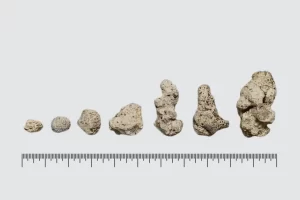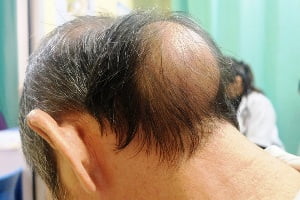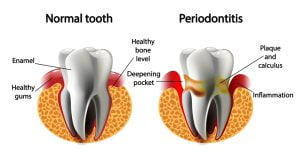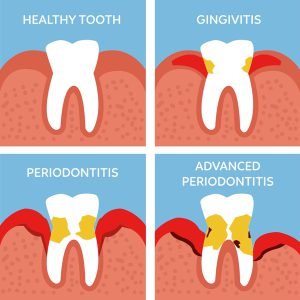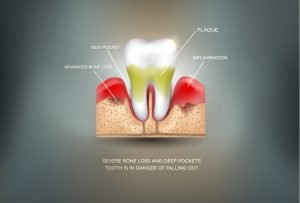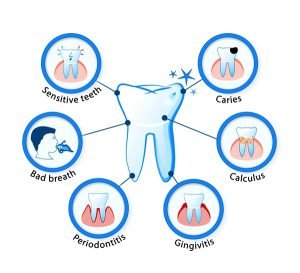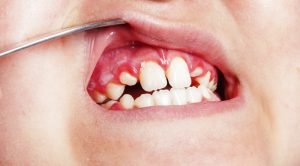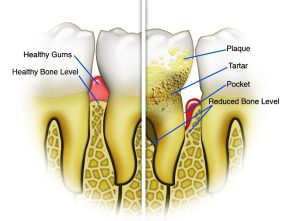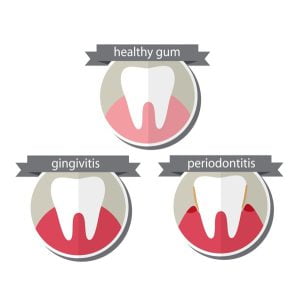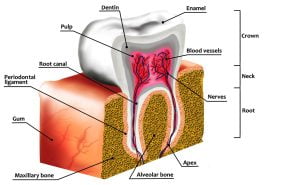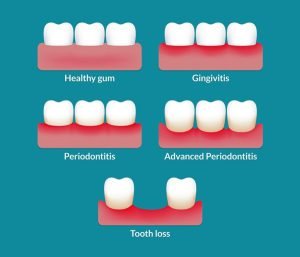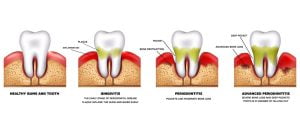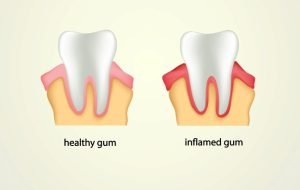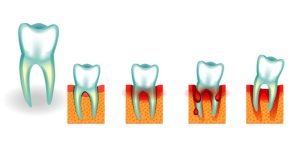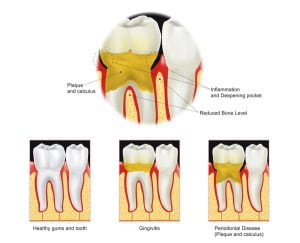Browsing: Periodontal Disease Graphics
Comprehensive Information, Resources, and Support on Periodontal Disease
Periodontitis is a inflammatory diseases affecting the periodontium, the tissues that surround and support the teeth. It is a serious gum infection that damages the soft tissue and the bone that supports your teeth. The condition can cause your teeth to loosen or lead to tooth loss. Periodontitis is a quite common dental problem but is largely preventable.
Periodontitis is a serious infection of gums that damages the soft tissue and destroys the bone that supports our teeth.
Stage 1 is early Gum Disease/Gingivitis which is characterised by the gums turning pink and there’s going to be little to no signs of bleeding or inflammation. Stage 2 is mild periodontitis and stage 3 represents advanced periodontitis. As the bacteria and plaque are left to grow and the disease progresses, the gums and teeth start to separate further from each other. This leads to the development of deep gingival pockets, which can promote bacterial growth. This leads to mild and then advanced stages.
The images shows detailed illustration of the inflammation due to gum disease. Tissue damage can occur due to the action of cells involved in the inflammation and their products.
Common tooth disease: Sensitive teeth, caries, calculus, gingivitis, periodontitis and bad breath.
The image shows a case of stomatitis and gingivitis in a child. Stomatitis usually appears in children of the age of 2 to 4 years. The illness begins with fever. In 1 to 2 days grey-white blisters appear in the mouth and the gums turn red, swell up and
The image shows healthy teeth vs teeth with periodontal disease. Swollen and bleeding gums are early signs of periodontal gum disease. Gingivitis (gum inflammation) generally precedes periodontitis (gum disease). However, not all gingivitis progresses to periodontitis.
The image shows periodental disease causing inflammation in the tooth. Toothache occurs due to the inflammation of the central portion of the tooth called pulp. The pulp contains several nerve endings that are very sensitive to pain.
The image shows anatomy of human tooth decay and tooth loss. Tooth decay is the breakdown of teeth due to acids made by bacteria.
The image shows stages of periodontal disease from healthy gums to gingivitis, periodontitis and tooth loss. Gum disease is the leading cause of tooth loss in adults.
Periodontitis is the inflammation of gums and supporting structures of the teeth. It is one of the most common dental diseases. Periodontitis is caused by certain bacteria (called periodontal bacteria) and by the local inflammation caused by the action of those bacteria.
Gingivitis is the inflammation of gums, or gingiva. It is a non-destructive type of periodontal disease, but if left untreated, it can progress to periodontitis.
Tooth loss is a process in which one or more teeth come loose and fall out. In adults, losing teeth is undesirable and is the result of an injury or disease, such as dental avulsion, tooth decay, and gum disease.
Continued bad breath in your mouth may be a warning sign of gum (periodontal) disease. Gum disease is caused when there is a buildup of plaque on the teeth. The bacteria present in the mouth cause the formation of toxins which lead to irritation in gums. Gum disease is a known cause of bad breath as the gums pull away from the teeth and leave behind pockets in which bacteria settles and replicates, which also causes halitosis (bad breath).
ADVERTISEMENT
